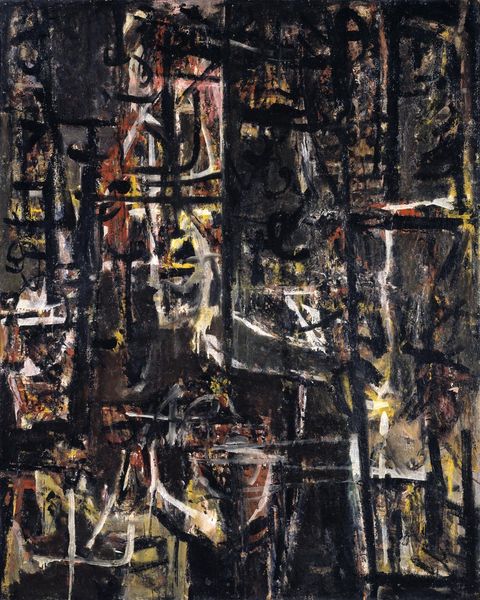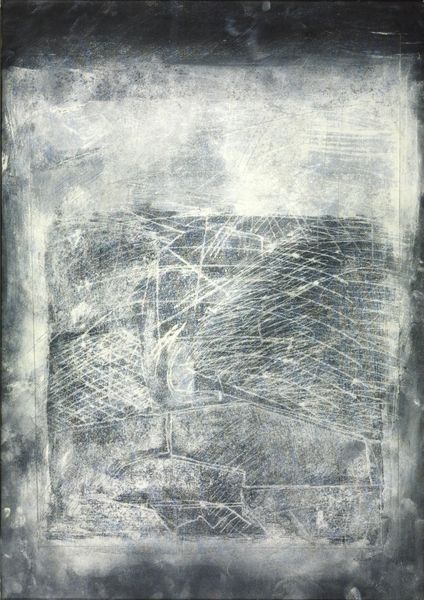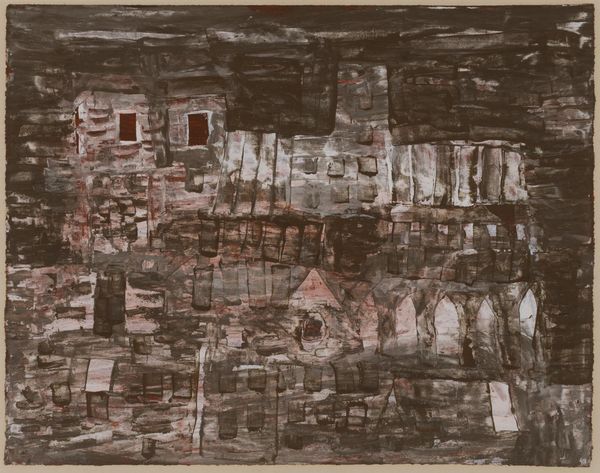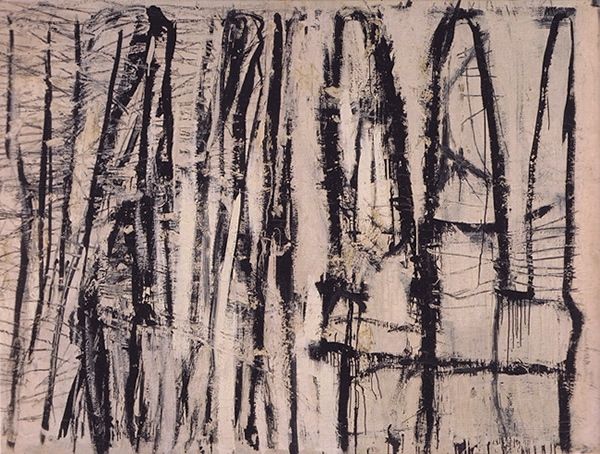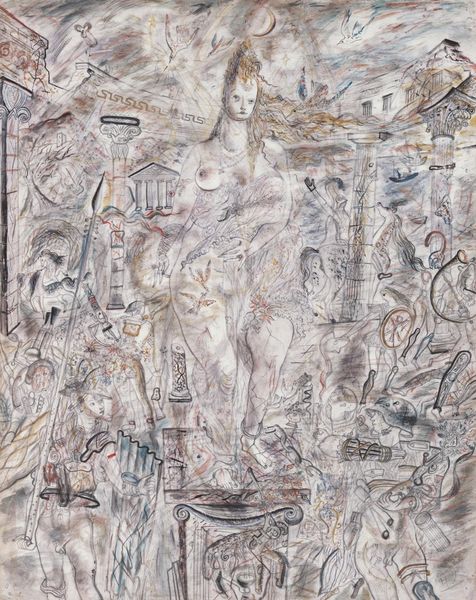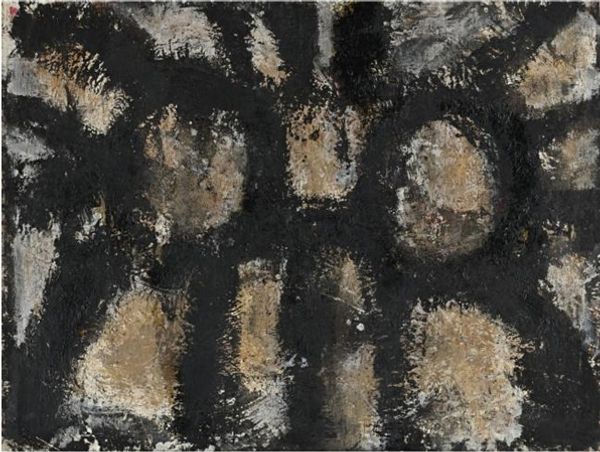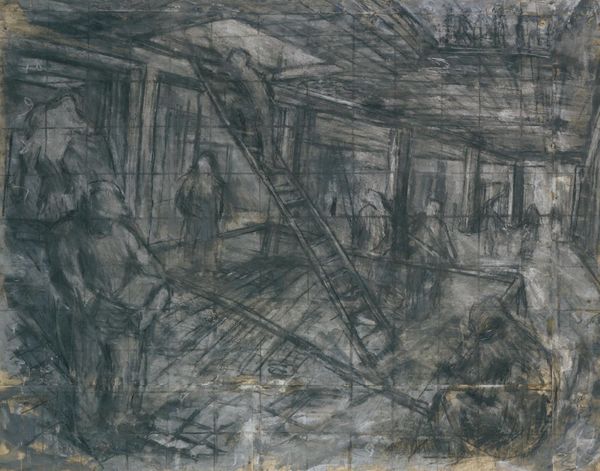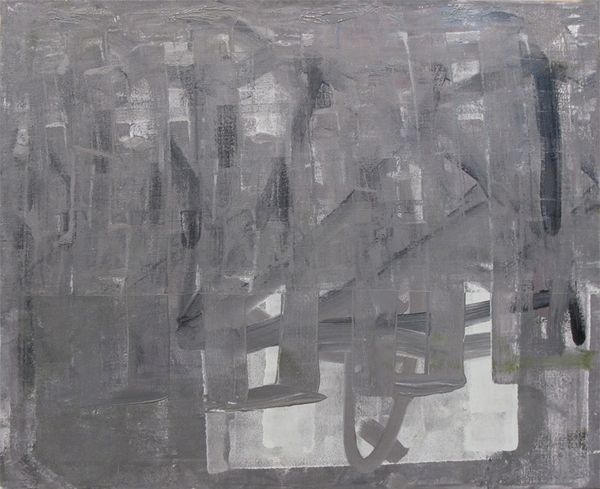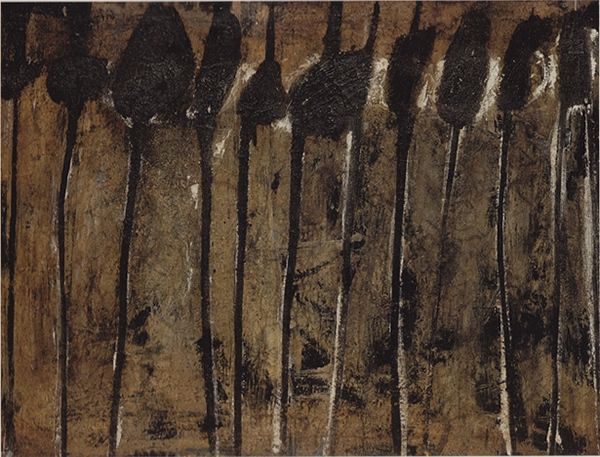
Dimensions: support: 1551 x 1186 mm frame: 1575 x 1210 x 57 mm
Copyright: © ADAGP, Paris and DACS, London 2014 | CC-BY-NC-ND 4.0 DEED, Photo: Tate
Curator: Let's begin. Editor: So, this is Jean Dubuffet's "Large Black Landscape," material and date unknown, housed at the Tate. It feels intensely textural, almost like looking at a relief map of some unknown city. What strikes you most about the materiality and the means of its production? Curator: I see a deliberate breakdown of traditional landscape painting. Dubuffet challenges the idealized view of nature by focusing on the grit and material reality, what some might call the 'low' aspects of the earth. How does this confront conventional notions of art as separate from the everyday? Editor: It makes me rethink my own understanding of landscape art. It's less about beauty and more about… the physical world itself. Curator: Precisely. Dubuffet compels us to reconsider the social context and the labor involved in extracting and transforming the materials. His raw approach forces us to confront the means of artistic production. Editor: That's a perspective I hadn't considered before. Curator: Indeed, focusing on the material process opens up a new way to appreciate the artwork.
Comments
tate 6 months ago
⋮
http://www.tate.org.uk/art/artworks/dubuffet-large-black-landscape-t07109
Join the conversation
Join millions of artists and users on Artera today and experience the ultimate creative platform.
tate 6 months ago
⋮
In the 1940s Dubuffet became interested in work made by untrained artists, children and the mentally ill. He believed that such art, which he called Art Brut (Raw Art), was free from the cultural conventions governing fine art, and reflected the true dynamics of the human mind. Dubuffet particularly admired graffiti and the surface of Large Black Landscape, which was built up of layers of paint into which lines were scraped and gouged, is reminiscent of an aged, crumbling, graffiti-covered wall. Gallery label, July 2012


